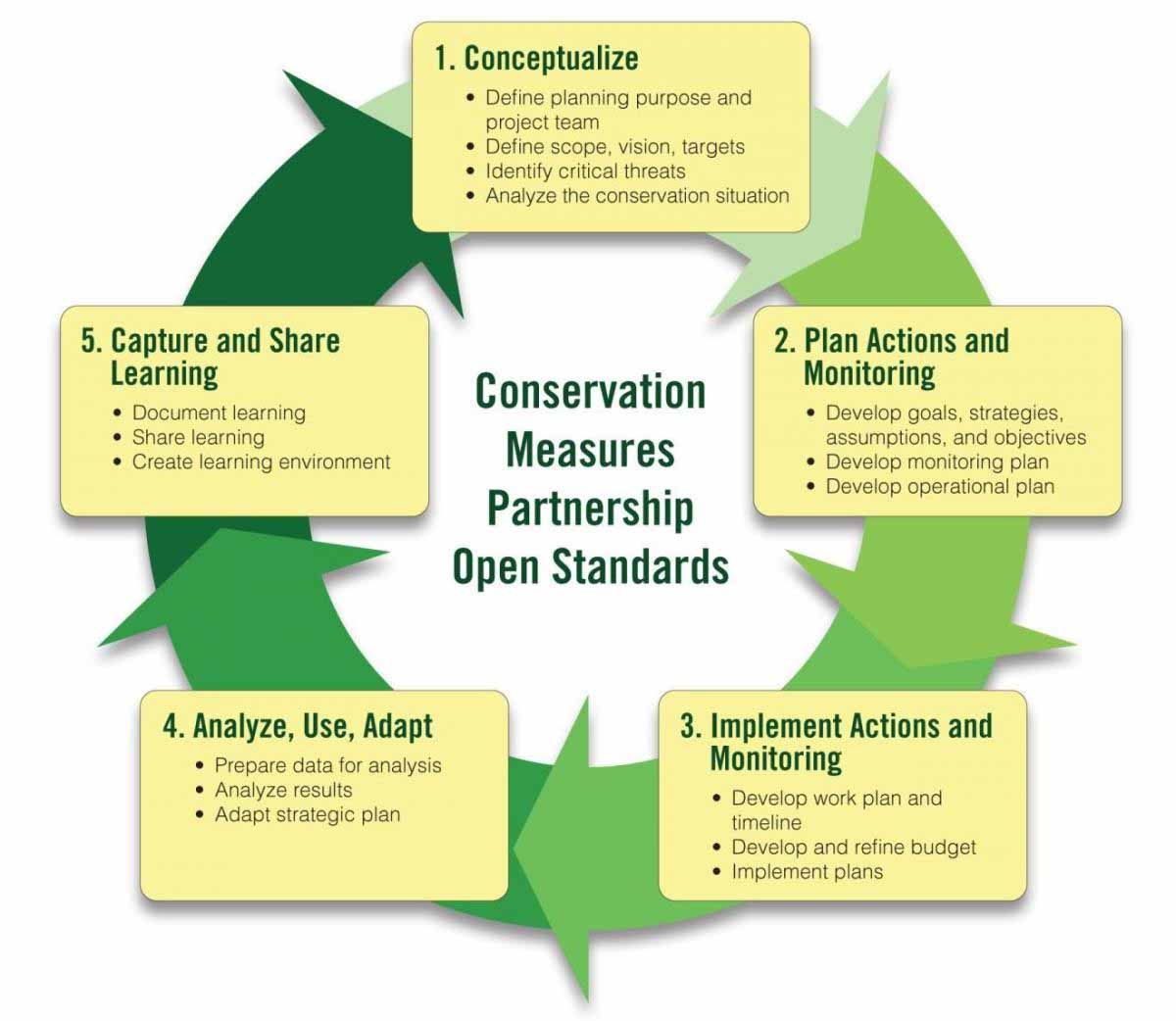
Open Standards for the Practice of Conservation
The biodiversity conservation community is tackling large, complex, and urgent environmental problems where the stakes are high. People around the world are counting on us; they trust us, they work alongside us, and they are giving us significant resources to act effectively to save the planet. But we have a problem – we don’t have a fully functional system to assess the effectiveness of our actions. While many inspiring advances have been made, few conservation organizations can say consistently what is working, what could be improved, and what approaches need to be changed.
Without more rigorous measurement of effectiveness and disciplined recording of our efforts, how will we know if we are progressing as rapidly as needed to achieve our conservation goals? How will we become more efficient? How will we learn from one another? And how will we be able to demonstrate our achievements so that we can build public and political will and thus expand our resources to truly meet the challenges we face?














